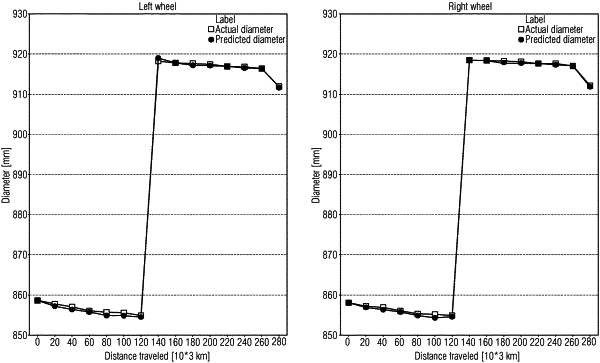| CPC B61L 15/0081 (2013.01) [B61L 27/57 (2022.01); G06N 20/00 (2019.01); G07C 5/004 (2013.01)] | 14 Claims |

|
1. A method for controlling a condition of a wear and tear element of a track-bound vehicle, the method comprising:
determining a second condition of the wear and tear element, being a chronologically subsequent condition to a first condition, by starting from the first condition of the wear and tear element and using a machine learning algorithm representing a chronological behavior of the wear and tear element;
providing a supervised learning algorithm as the machine learning algorithm, wherein the supervised learning algorithm is trained by an ordinary least square method;
determining a first performable action performable on the wear and tear element by using the determined second condition of the wear and tear element and at least one predefined conditional criterion for the wear and tear element;
determining a resulting third condition of the wear and tear element by using a conditional change of the wear and tear element, the conditional change being a consequence of the first performable action;
determining a second performable action performable on the wear and tear element by using the resulting third condition of the wear and tear element and the at least one predefined conditional criterion for the wear and tear element;
carrying out at least one action selected from the group consisting of the first performable action and the second performable action as machining of the wear and tear element; and
adjusting a wear prediction model with the machine learning algorithm, and using the wear prediction model to reduce a number of inspections of the wear and tear element.
|